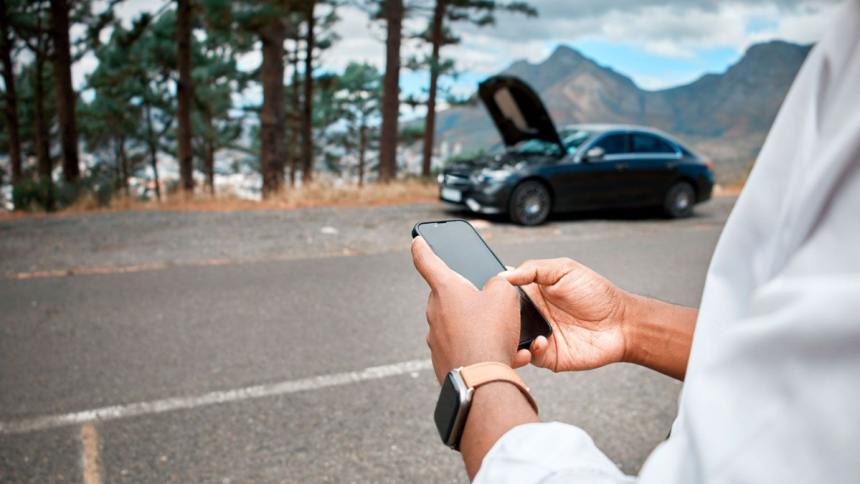Roadside emergencies can disrupt any trip, causing delays and stress. Being prepared with proper vehicle maintenance, including checking tire pressure, oil levels, and brakes, reduces the risk of breakdowns. Keeping an emergency kit and knowing basic repair skills can help manage unexpected issues effectively.
Travelers should also consider extended car warranty coverage to protect against costly repairs during their journey. Understanding evacuation routes, packing essentials like water and food, and having access to roadside assistance ensures smoother, safer trips.
Essential Tips to Prevent Roadside Emergencies
Proper preparation and routine care significantly reduce the risk of breakdowns and other roadside emergencies. Simple actions, such as maintaining the vehicle, carrying the right tools, and planning routes carefully, help avoid issues like flat tires, dead car batteries, or getting caught in bad weather.
Regular Vehicle Check-Ups and Maintenance
Consistent vehicle inspections are key to preventing roadside problems. Checking fluid levels, tire pressure, and brakes before a trip can identify issues before they escalate. A worn tire or weak battery can quickly lead to a breakdown if ignored.
Scheduling routine maintenance through a trusted mechanic ensures systems like the engine and transmission stay in good condition. Extended car warranty coverage can offer peace of mind by covering unexpected repairs during travel. Regularly testing the car battery and replacing it every 3-5 years reduces the chance of a dead battery.
Preparing a Comprehensive Emergency Kit
A well-stocked emergency kit is essential in handling unexpected situations on the road. Important items include a spare tire, jack, jumper cables, flashlight, reflective warning triangles, and basic tools. Extra essentials should include bottled water, non-perishable snacks, a first aid kit, and warm blankets if traveling in cold weather.
Including emergency contact numbers, such as roadside assistance services, helps ensure help is just a call away. The kit should be checked and updated before every trip to replace expired supplies or damaged items.
Understanding Common Road Trip Hazards
Road trips expose travelers to hazards such as flat tires, dead batteries, sudden engine trouble, inclement weather, and road closures. Knowing how to anticipate and react to these can prevent emergencies.
Drivers should monitor weather forecasts to avoid storms or hazardous conditions. Carrying tire repair kits and knowing how to use them helps fix flats on the go. Awareness of traffic updates and alternative routes minimizes delays caused by road closures. Planning fuel stops and keeping the gas tank at least half-full prevents running out of fuel in remote areas.
Planning and Adapting Your Route
Careful route planning reduces unexpected complications during travel. Mapping the trip with alternate routes allows flexibility if traffic jams or road closures occur. Using navigation apps with live updates gives real-time alerts about accidents or construction.
It is wise to schedule regular breaks to prevent fatigue and reassess conditions. Adjusting plans based on weather or vehicle performance early avoids bigger issues. Having extended car warranty coverage or a roadside assistance membership ready can provide support if adaptation is not enough to avoid breakdowns.
Staying Safe and Responding to Issues on the Road
When a roadside emergency occurs, quick, calm action is essential. Knowing how to deal with common problems like flat tires or dead batteries and when to call for help can keep a driver safe and reduce delays on any trip.
Dealing With a Flat Tire
When a driver notices a flat tire, the first step is to safely pull over to a stable, flat area away from traffic. Turning on hazard lights alerts other drivers.
Before changing the tire, it’s important to set the parking brake. Using a flashlight helps if the situation occurs at night. The driver should use the car jack to lift the vehicle and remove the lug nuts with a wrench.
Once the flat tire is removed, the spare tire can be mounted and the lug nuts tightened securely. Driving on a spare tire is only a short-term solution until the regular tire is repaired or replaced.
How to Handle a Dead Battery
A dead car battery often leaves drivers stranded, but jumper cables can resolve this quickly if another vehicle is available. First, cars should be parked close but not touching, with both engines off.
Connecting the red (positive) clamps to the positive battery terminals first minimizes the risk of sparks. Next, connect the black (negative) clamp to the booster car and then to an unpainted metal surface on the dead car away from the battery.
After ensuring all clamps are secure, starting the booster vehicle and then the dead car can help jump-start the battery. Once running, it’s best to let the recharged car idle for several minutes.
Utilizing Roadside Assistance Services
Roadside assistance services provide reliable help during emergencies that drivers cannot handle alone. These services often cover towing, tire changes, battery jump-starts, and fuel delivery.
Having the roadside assistance phone number or app readily available is crucial. Membership programs offer faster response times, especially on long road trips. For additional protection, consider extended car warranty coverage to help with unexpected repairs.
When contacting the service, the driver should clearly describe their location and issue. Staying inside the vehicle with doors locked until help arrives is recommended for safety.
Lynn Martelli is an editor at Readability. She received her MFA in Creative Writing from Antioch University and has worked as an editor for over 10 years. Lynn has edited a wide variety of books, including fiction, non-fiction, memoirs, and more. In her free time, Lynn enjoys reading, writing, and spending time with her family and friends.















